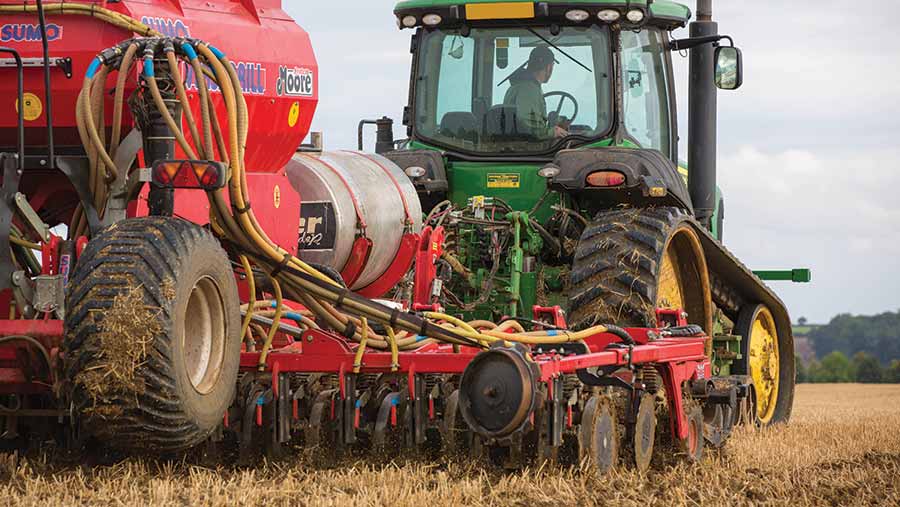Last minute tips for drilling oilseed rape
 © Tim Scrivener
© Tim Scrivener Oilseed rape growers are being urged to time drilling by seedbed conditions and not calendar date to counter the pest pressure and drought some saw last summer.
Experts are cautious about going too early as this can encourage clubroot and other diseases like light leaf spot, while over-developed crops may lack winter hardiness.
Many will be tempted to drill early to repel the threat from cabbage stem flea beetles, but Will Vaughan-France of seed breeder Monsanto urges caution and suggests 10 August is a good start date for drilling.
“Early drilling in poor conditions is worse than late drilling in good conditions. We are aiming for a well-established plant before the winter,” he tells Farmers Weekly.
See also: Video: World record oilseed rape yield attempt in Lincolnshire
Seed rates and varieties
Seed rate, like drilling date, is a function of conditions and not calendar date and he suggests a plant population of 25-30 plants/sq m for hybrid varieties, which would need 40-50 seeds/sq m in good conditions and 50-60 in poor conditions.
The best way to fight off the flea beetle threat is to create a good seedbed to allow good seed-soil contact and conserve moisture by rolling.
Varieties, whether hybrid or conventionals, should be chosen to fit in with the likely drilling date, says Mr Vaughan-France, who is the group’s oilseeds technical specialist.
Those varieties that have rapid erect early growth habits should be held back for late drilling, and those that develop slower with more prostrate growth could be used for early drilling.
From his group’s hybrid varieties, early drillers would include Exclaim and Expansion and later drillers Extrovert and Exalte.
Nutrition
Growers can save money by placing nitrogen and phosphate autumn fertiliser near the seed at drilling rather than by broadcasting across the seedbed, due largely to the lack of mobility of phosphate in the soil.
Ian Matts, independent agronomist and consultant at fertiliser group Yara, says growers should aim to place fertiliser below the seed to allow roots to grow into the fertilised soil and the crop to establish well to counter any difficult conditions.
“Every crop will benefit from fertiliser placement in the seedbed, apart from those grown in very higher organic matter soils,” he says.
His recommendation is for 20-25kg/ha of nitrogen and 30kg/ha of phosphate placed near the seed, while boron is important either in the seedbed or applied later.
This dose of nitrogen is more efficient than broadcasting 60-70kg/ha, and if taken up by the plant in the autumn could lead to cutting back nitrogen fertiliser in the spring.
Weed control
Oilseed rape is vulnerable to early weed competition and work from crop consultant Adas has shown a 1-2t/ha yield response from good control.
A pre-emergence herbicide is a good starting point and if the seedbed is well consolidate with retained moisture then this will help the weedkiller to work.
James Waterhouse, agronomy manager with BASF, says fast early weed control can be a good defence against flea beetles and slugs as well as boosting yield.
He adds that the aim should be for 8-8-8 by the end of November – that is eight true leaves with no stem extension, a root collar with a diameter of 8mm and a root mass of 8g.

